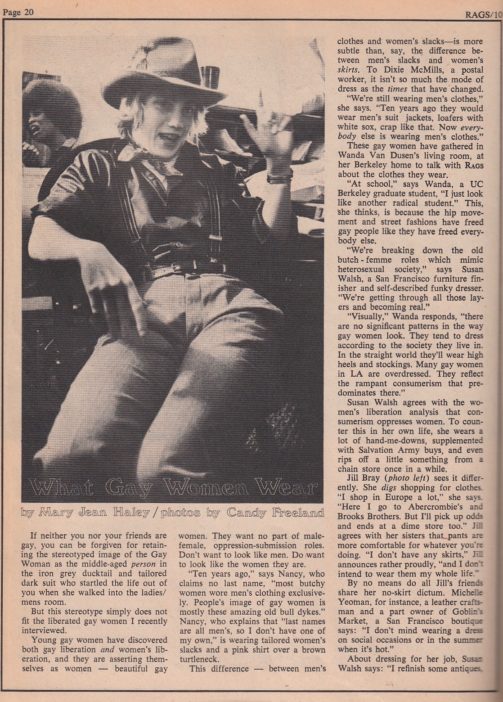The above image is an article in the March 1971 issue of Rags magazine which excitedly announces that “the hip movement and street fashions have freed gay people like they have freed everybody else.” Young people of all genders and sexualities in this era were blurring the lines between clothing that was perceived by mainstream culture as traditionally feminine or masculine. While this article makes problematic generalizations or sweeping statements on behalf of gay women, it critically engages with the way in which “consumerism oppresses women.” As a self reflective fashion magazine based in the Bay Area, Rags shows shows us what letting go of gendered expectations for clothing looked like. The article reminded readers at the time that”Clothes are political” implying that they can send a powerful message with the clothing they chose to wear. The hippies were aware of the inherent power embedded in their visual culture.
The gay women felt empowered to break down the dominant heterosexual model for a relationship and the clothing that comes with it. San Francisco local, Susan Walsh who was interviewed for the article expressed the political potential of her way of dress:
“We’re breaking down the old butch-femme roles which mimic heterosexual society.”
This article incorporates the opinions and life experiences of many different gay women, illustrating that there is no single way to dress like a gay woman despite the harmful stereotypes generated by the dominant culture. Ultimately, a woman’s clothes, as part owner of a San Francisco boutique Michelle Yeoman stated for Rags “should suit who she is and how she feels.”
